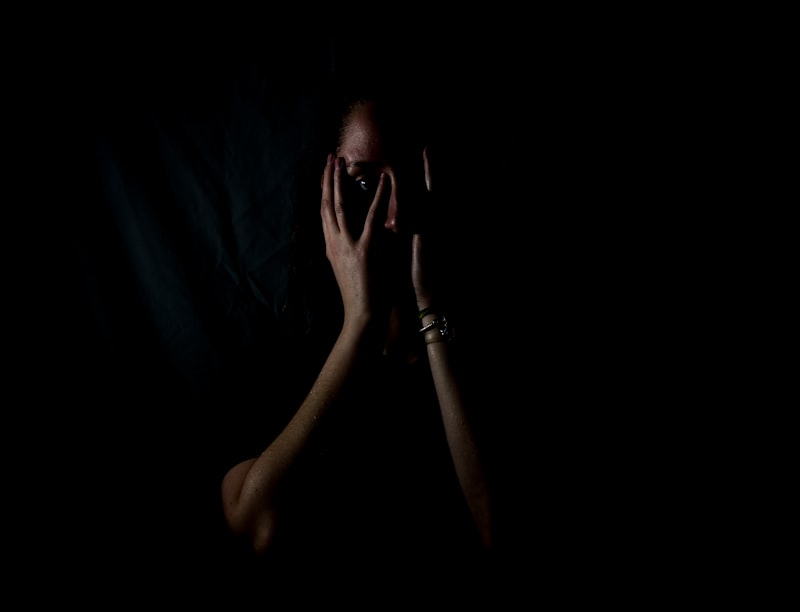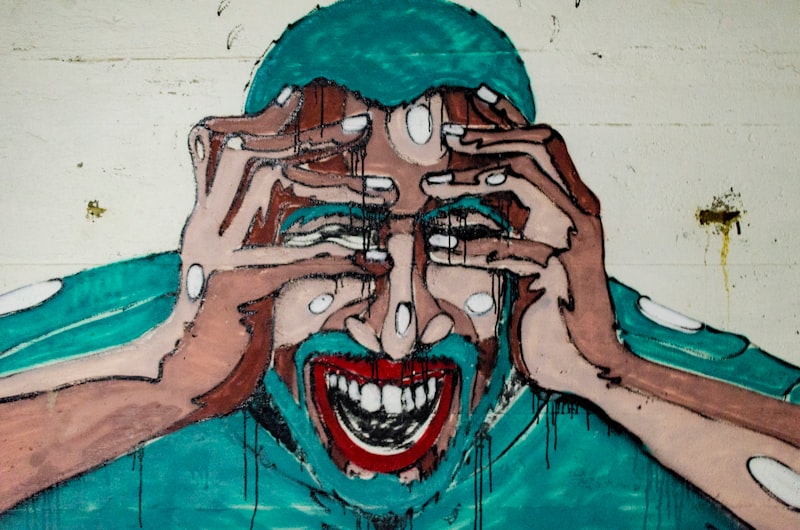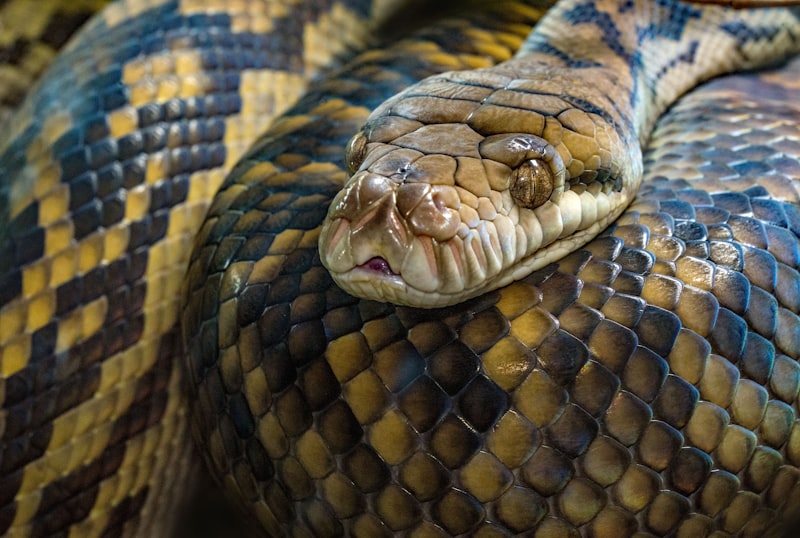Have you ever wondered why you get that spine-tingling sensation while watching a horror movie or reading a thrilling novel? The science behind fear and suspense delves deep into our brain’s inner workings, unraveling the mystery behind these intense emotional reactions.
At its core, fear is a primal response designed to keep us safe from perceived threats. When we encounter something frightening, our amygdala, the brain’s fear center, springs into action. It sends signals to release stress hormones like adrenaline, preparing our bodies for fight or flight. This physiological response heightens our senses and sharpens our focus, readying us to react to danger.
Suspense, on the other hand, plays with our expectations and uncertainties. It keeps us on the edge of our seats, eagerly anticipating what might happen next. This psychological tension triggers a cascade of emotions as we empathize with characters facing perilous situations.
Filmmakers and authors masterfully exploit these mechanisms to craft narratives that grip audiences. They manipulate pacing, sound, visuals, and narrative twists to intensify emotions. Just like a roller coaster ride, they take us on a thrilling journey of highs and lows, keeping us hooked until the very end.

Understanding the science behind fear and suspense can enhance our appreciation for these experiences. It shows how our brains are wired to seek thrill and excitement, even in controlled environments. By immersing ourselves in these stories, we engage our imagination and empathy, experiencing a gamut of emotions in a safe and controlled manner.
Next time you find yourself glued to a suspenseful movie or gripping novel, remember it’s not just entertainment—it’s a fascinating exploration of human psychology and storytelling mastery.
Unveiling the Neurological Thrill: How Fear Hijacks Your Brain
At its core, fear begins in the brain’s almond-shaped structure known as the amygdala. This tiny but potent region acts as the brain’s alarm system, swiftly detecting potential dangers in our surroundings. Imagine it as a vigilant guard, constantly scanning for threats. When it senses danger, whether real or perceived, the amygdala sets off a chain reaction.
Neurotransmitters like adrenaline surge through our bloodstream, preparing our bodies for action in what’s commonly known as the fight-or-flight response. Heart rate spikes, muscles tense, and senses sharpen—all to enhance our chances of survival in the face of peril. This physiological cascade is evolution’s gift, honed through ages to keep us safe from predators or imminent harm.
Interestingly, fear doesn’t just activate the amygdala; it also communicates with other parts of the brain, particularly the prefrontal cortex. This area, responsible for higher-level thinking and decision-making, attempts to assess the situation and rationalize the fear response. However, in moments of intense fear, this rationalization often takes a back seat to instinct, highlighting the primal nature of fear’s grip.

Moreover, the brain’s hippocampus, crucial for memory formation, plays a pivotal role in fear conditioning. It encodes details of fearful experiences, ensuring we learn to avoid similar threats in the future—an adaptive mechanism vital for survival.
In today’s world, where physical threats are less common but psychological stressors abound, understanding how fear hijacks our brain remains critical. From phobias to anxiety disorders, fear’s impact on mental health underscores the need for effective coping strategies and therapeutic interventions.
From Goosebumps to Gasps: Understanding the Physiology of Suspense
Suspense is like a rollercoaster ride for your emotions. It hooks you in right from the start and takes you on a journey full of twists and turns. Imagine reading a mystery novel where the detective is hot on the trail of a cunning criminal. With each clue uncovered, your anticipation builds. Your brain starts firing on all cylinders, trying to piece together the puzzle before the big reveal.
One of the key players in the physiology of suspense is adrenaline. When we encounter something thrilling or suspenseful, our brain releases this hormone into our bloodstream. Adrenaline is like a shot of espresso for your body—it boosts your heart rate, sharpens your senses, and prepares you for action. It’s why you might find yourself holding your breath or feeling a rush of energy during a tense scene.
But suspense isn’t just about adrenaline; it’s also about dopamine. This neurotransmitter is responsible for the pleasure and reward centers in our brain. When we experience suspense, whether it’s waiting for the outcome of a daring escape or the resolution of a romantic subplot, our brain releases dopamine as a way of rewarding us for staying engaged. It’s like a little pat on the back that keeps us coming back for more.

Physiologically, suspense keeps us on our toes. It taps into our primal instincts, making us hyper-aware of our surroundings and focused on the unfolding narrative. Have you ever noticed how time seems to slow down during a suspenseful moment? That’s because your brain is prioritizing the information coming in, trying to predict what will happen next.
Fear Factor: Exploring the Evolutionary Roots of Human Dread
Have you ever wondered why fear seems to grip us in certain situations, almost instinctively? Fear, that primal emotion deeply ingrained in human nature, has roots that trace back through our evolutionary journey. It’s not just a modern phenomenon; it’s a survival mechanism etched into our very being.
Picture this: you’re walking alone in a dense forest at dusk. Suddenly, a rustle in the bushes sends shivers down your spine. Your heart races, and you’re immediately on high alert. This reaction is more than just nerves; it’s your brain’s ancient defense system kicking into gear.
From the earliest humans navigating treacherous landscapes to modern-day challenges, fear has played a crucial role in keeping us safe from harm. It’s a response honed over millennia of evolution, designed to protect us from potential threats. This innate fear response is what psychologists call the fight-or-flight reaction – a surge of adrenaline that prepares us to confront danger head-on or flee to safety.
But why do certain things evoke fear more than others? The answer lies in our history. Millennia ago, when survival often depended on recognizing and reacting to danger swiftly, those who feared less likely perished. This selective pressure ensured that fear became deeply embedded in our genetic makeup.
Today, while our environment has drastically changed, our primal instincts remain intact. We may not face saber-toothed tigers anymore, but modern fears like public speaking or financial insecurity trigger the same ancient pathways in our brains.
Understanding the evolutionary roots of fear helps us appreciate its complexity. It’s not just about being scared; it’s about navigating a world where the unknown still lurks. So next time you feel that chill down your spine, remember – it’s your evolutionary legacy reminding you to stay vigilant in an unpredictable world.
Thrill Seekers’ Delight: Why Some Enjoy Fear More Than Others

Ever wondered why some people seem to thrive on fear-inducing activities while others shy away? The world of thrill-seeking is as diverse as it is intriguing, encompassing individuals who seek out adrenaline-pumping experiences like skydiving, roller coasters, or even exploring haunted places. What drives these thrill seekers, and why does fear hold such an allure for them?
For many, it’s all about the rush – that electrifying feeling that courses through your veins when you’re on the edge of your comfort zone. It’s not just about conquering fear but embracing it, turning what might be terrifying to some into an exhilarating adventure. Psychologically, thrill seekers often have a higher tolerance for uncertainty and novelty, traits that make them more open to exploring new and sometimes risky activities.
Interestingly, the enjoyment of fear can also be linked to biology. When we experience fear, our bodies release adrenaline, triggering a fight-or-flight response. For thrill seekers, this rush of adrenaline becomes addictive, akin to a natural high that keeps them coming back for more. It’s like riding a wave of excitement, where the fear itself becomes a source of pleasure rather than dread.
Moreover, thrill seekers often see fear as a challenge to be conquered. They view fear-inducing situations as opportunities for personal growth and mastery, pushing themselves to overcome their limits and expand their comfort zones. In a way, it’s a quest for self-discovery and a deeper understanding of their own capabilities.
The allure of fear for thrill seekers is multi-faceted, blending psychological, biological, and personal factors. It’s about seeking that perfect balance between danger and exhilaration, where fear becomes not something to avoid but something to embrace. So, the next time you see someone diving headfirst into a heart-pounding adventure, remember – for them, fear is not a barrier but a pathway to excitement and self-fulfillment.
Heart-Pounding Moments: The Chemistry of Suspense in Film and Literature
Imagine watching a thriller where the protagonist slowly opens a creaky door, not knowing what horrors might lie beyond. Or reading a mystery novel where each turn of the page brings you closer to uncovering the truth behind a series of cryptic clues. These moments are meticulously designed to evoke tension and anticipation, drawing you deeper into the narrative.
Suspense thrives on unpredictability and anticipation. It’s the art of withholding information strategically, keeping viewers and readers guessing. Think of it like a masterful chef preparing a dish: each ingredient (plot twist, character revelation, eerie setting) is added at just the right moment to heighten the overall flavor of suspense.
In film, suspense is often amplified through visual and auditory cues. Close-up shots of a character’s nervous expressions, eerie silence broken only by faint footsteps, or sudden shifts in lighting can all contribute to the tense atmosphere. Directors use these techniques to manipulate our senses and immerse us in the unfolding drama.
Literature, on the other hand, relies heavily on descriptive language and narrative pacing to build suspense. Authors weave intricate webs of intrigue, planting seeds of doubt and curiosity in the minds of their readers. It’s a delicate balance of revealing enough to keep interest alive while holding back crucial details to maintain suspense.
What makes suspense truly effective is its ability to evoke a visceral response from the audience. It taps into our primal instincts of fight or flight, keeping us emotionally invested in the outcome. Whether it’s a pulse-pounding chase scene or a chilling revelation, suspense keeps us glued to our seats, eagerly devouring each moment as it unfolds.
The Art of Suspense: How Storytellers Manipulate Fear for Maximum Impact
Suspense isn’t just about scaring people; it’s about playing with their emotions, keeping them hooked until the very last moment. Think about how Alfred Hitchcock expertly built tension in his films, drawing viewers into a world where every shadow could hide danger. It’s like being on a rollercoaster ride, unsure of what’s around the next bend but eagerly anticipating the thrill.
One of the key techniques storytellers use is pacing. They carefully control the flow of information, revealing just enough to keep the audience intrigued but withholding crucial details to maintain suspense. It’s a delicate balance – too much information too soon, and the tension fizzles out; too little, and the audience loses interest.
Another powerful tool in the arsenal of suspense is characterization. Complex, relatable characters add depth to the narrative and make the audience more invested in their fate. When you care about the characters, their peril becomes your peril, heightening the emotional stakes and intensifying the fear you feel.
Setting also plays a crucial role. Whether it’s a dark and stormy night in a haunted mansion or a deserted alley in a bustling city, the environment can enhance the atmosphere of dread. Vivid descriptions create a sensory experience for the audience, immersing them in a world where danger lurks around every corner.
But perhaps the most potent weapon in the storyteller’s arsenal is anticipation. By hinting at what’s to come, planting seeds of doubt and uncertainty, they keep the audience guessing and on edge. It’s the fear of the unknown, the what-if scenarios that haunt our imagination long after the story ends.
Fear as a Motivator: How Anxiety Can Drive Action and Decision-Making
Think about it: when you’re faced with a deadline looming over you, the fear of failure can kick your productivity into high gear. That rush of adrenaline and focus can actually help you accomplish tasks you might have procrastinated on. It’s like having a turbo boost for your brain.
Anxiety, while often seen as a hurdle to overcome, can also be reframed as a catalyst for change. When you feel anxious about a situation, your mind goes into problem-solving mode. You start considering all possible outcomes and planning your next steps meticulously. It’s almost like your brain is preparing you for battle, arming you with the tools you need to face whatever comes your way.
Moreover, fear can steer us away from harmful decisions. Just think about how you might reconsider speeding on the highway when you see a police car ahead. That fear of getting a ticket (or worse, causing an accident) can make you ease off the accelerator and stick to the speed limit.
Fear as a motivator isn’t just limited to personal situations either. In business, the fear of falling behind competitors can drive companies to innovate and stay ahead of the curve. It pushes entrepreneurs to take calculated risks and explore new markets, all in the name of survival and success.
So, the next time you feel that familiar pang of anxiety, remember: fear isn’t always the enemy. It can be a powerful ally, nudging you towards action and guiding your decision-making process. Embrace it, harness it, and let it propel you towards your goals.
Frequently Asked Questions
How do filmmakers and storytellers create suspense in movies and literature?
Learn how filmmakers and storytellers build suspense through strategic pacing, unexpected plot twists, ambiguous clues, and withholding crucial information to engage audiences emotionally and keep them on the edge of their seats.
Can fear and suspense be beneficial to human psychology?
Explore how fear and suspense can have surprising benefits for human psychology, influencing resilience, emotional regulation, and even enhancing cognitive processes.
What physiological reactions occur during moments of fear and suspense?
Learn about the physiological reactions that occur during moments of fear and suspense, including increased heart rate, adrenaline release, heightened senses, and activation of the fight-or-flight response.
How does anticipation contribute to the experience of fear and suspense?
Anticipation heightens fear and suspense by building tension through uncertainty and expectation. It engages the imagination, creating a sense of dread or excitement as events unfold.
What role does the amygdala play in processing fear and suspense?
Learn about the amygdala’s pivotal role in processing fear and suspense. Understand how this brain region triggers emotional responses and shapes our reactions to perceived threats and suspenseful situations.


